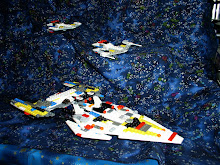Last week, I talked about some of the “secret” buttons that are hidden on your keyboard. This week, I’d like to a little bit more about that “board full of buttons” sitting on your desk. The one you have was probably purchased with your computer, you had little to no say about the feel, the size of the keys, the font on the buttons, or what features it came with. And, they even come in different colors. Though picking between beige and dark gray may not seem like much of a choice, some have lighted buttons, LCD panels and many features that feel more like gimmicks than useful.
I first learned to type on an IBM Selectric typewriter in high school. Now, typing on a membrane keyboard is like typing in oatmeal to me, feels like mush because there’s no tactile feedback about what buttons I hit, so I still look at the keys to make sure I hit the right one. The best way to pick a keyboard is to go to a store and press the keys to see how they feel to you.
You can also look at other features on the keyboard. Some has extra buttons that run a media player, like Winamp or Windows Media Player with volume controls, play, pause, and mute buttons. Some also have shortcut keys for Mail, The Internet, My Documents, My Pictures, and even My Music. These are nice features if you want to listen to music or watch a movie on your computer.
Companies that make good keyboards are Microsoft (yes, really), and Logitech. My personal favorite is no longer made, a Northgate Omnikey Ultra. It’s a huge tank, with a steel plate on the bottom. You can find cheap keyboards for about 7 dollars online, but they are –cheap-. And the prices go all the way to over a thousand for ones that have tiny little LCD displays in the keys that change depending how you program them and what programs you run. You can probably find a nice keyboard that fits your budget for around 20-40 dollars. I do prefer a wired keyboard, even though I am now using a wireless one, because you don’t have to worry about reception. But wired or wireless, they work exactly the same. The wireless keyboard has a small transmitter that plugs into the USB port (another issue) and the keyboard runs on batteries, usually a pair of AA’s.
Almost all keyboards with what’s called a “driver CD.” This CD has information on it that tells the computer how to use all those buttons. You can use just about any keyboard without drivers, but at reduced functionality. You probably won’t have the volume and other controls enabled until the drivers are installed. This is usually a fairly easy process, just pop the CD in the drive and it should auto-run. Then follow the directions.
If you get a new keyboard, or have a keyboard you like and want to keep, you can use glass cleaner sprayed into a paper towel to clean it. Also, you can find plastic keyboard covers from a variety of sources.


No comments:
Post a Comment